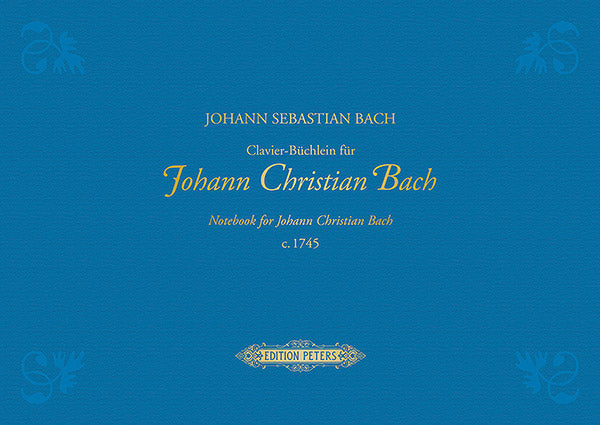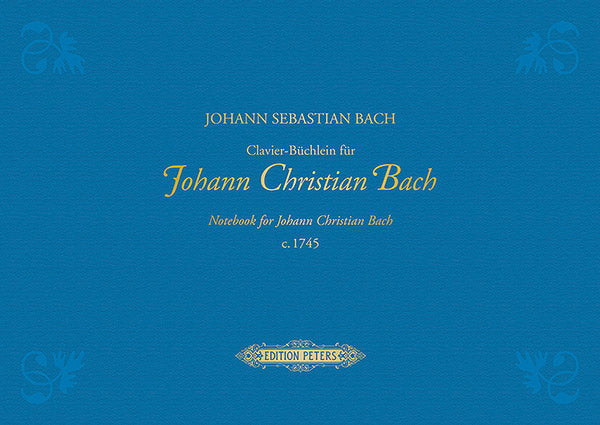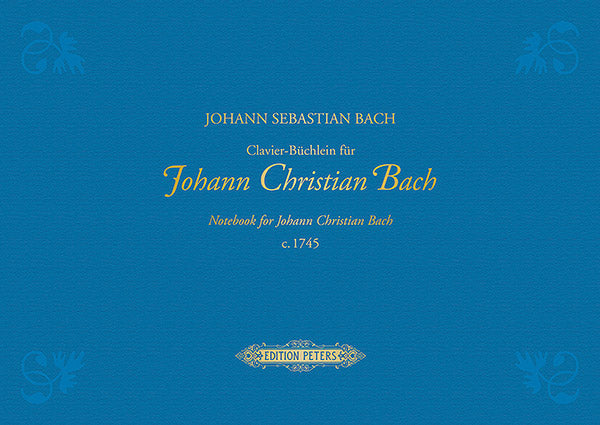Johann Christoph Altnickol
Bach: Notebook for Johann Christian
- Composers: Johann Christoph Altnickol (1720-1759), Carl Philipp Emanuel Bach (1714-1788), Johann Sebastian Bach (1685-1750), Johann Christoph Friedrich Bach (1732-1795), Johann Christian Bach (1735-1782)
- Editor: Christoph Wolff
- Instrumentation: Piano
- ISMN:
- Pages: 112
- Urtext / Critical Edition
Description
The Notebook for Johann Christian Bach completes the collection of surviving instructional works from within the Bach family, following the highly praised Notebooks for Anna Magdalena and Wilhelm Friedemann Bach. Together, Bach's Notebooks provide a fascinating glimpse into the domestic music academy of the Bach family home. They contain original compositions, exercises, and model examples by other composers, all collected with a view to providing a rounded musical education to family members. Presented as a luxury linen-bound edition with gold-embossed cover lettering, illustrations and critical commentary, this volume includes pieces not featured in previous collections.
This first Urtext edition Notebook for Bach's son Johann Christian has been reconstructed by renowned Bach scholar Christoph Wolff from copies from the estate of C.P.E. Bach. It includes pieces for keyboard by J.S. Bach, Johann Christian's initial attempts at composition (minuets and polonaises), and pieces by the older brothers Carl Philipp Emanuel and Johann Christoph Friedrich and son-in-law Johann Christoph Altnickol. The collection is completed by two sets of short preludes and fughettas from Bach's early Leipzig teaching practice, which may have come from other lost notebooks for his family, possibly the one for C.P.E. Bach.
Publishers use a lot of words to describe what they sell, and we know it can be confusing. We've tried to be as clear as possible to make sure you get exactly what you are looking for. Below are descriptions of the terms that we use to describe the various formats that music often comes in.
Choral Score
A score for vocalists that only contains the vocal lines. The instrumental parts are not there for reference. Generally, cheaper than a vocal score and requires multiple copies for purchase.
Facsimile
Reproductions of the original hand-written scores from the composer.
Full Score
For ensemble music, this indicates that the edition contains all parts on a single system (there are not separate parts for each player). In larger ensembles, this is for the conductor.
Hardcover
Hardbound. Generally either linen-covered or half-leather.
Orchestral Parts
Similar to a wind set, this is a collection of parts. In the case of strings, the numbers listed are the number of copies included, though generally these are available individually (often with minimum quantities required).
Paperback
When publishers offer multiple bindings (e.g. hardcover) or study scores, this is the "standard" version. If you're planning to play the music, this is probably what you want.
Performance / Playing Score
A score of the music containing all parts on one system, intended for players to share. There are not separate parts for each player.
Set of Parts
For ensemble music, this indicates that there are separate individual parts for each player.
Solo Part with Piano Reduction
For solo pieces with orchestra, this is a version that contains a piano reduction of the orchestra parts. For piano pieces, two copies are typically needed for performance.
Study Score
A small (think choral size) copy of the complete score meant for studying, and not playing. They make great add-ons when learning concertos and small chamber works.
Vocal Score
A score prepared for vocalists that includes the piano/organ part or a reduction of the instrumental parts.
Wind Set
For orchestral music, this is a collection of wind and percussion parts. The specific quantities of each instrument are notated.
With Audio
In addition to the printed music, the edition contains recordings of the pieces. This may be an included CD, or access to files on the internet.
With / Without Fingering (Markings)
Some publishers prepare two copies - a pure Urtext edition that includes no fingering (or bowing) suggestions and a lightly edited version that includes a minimal number of editorial markings.




